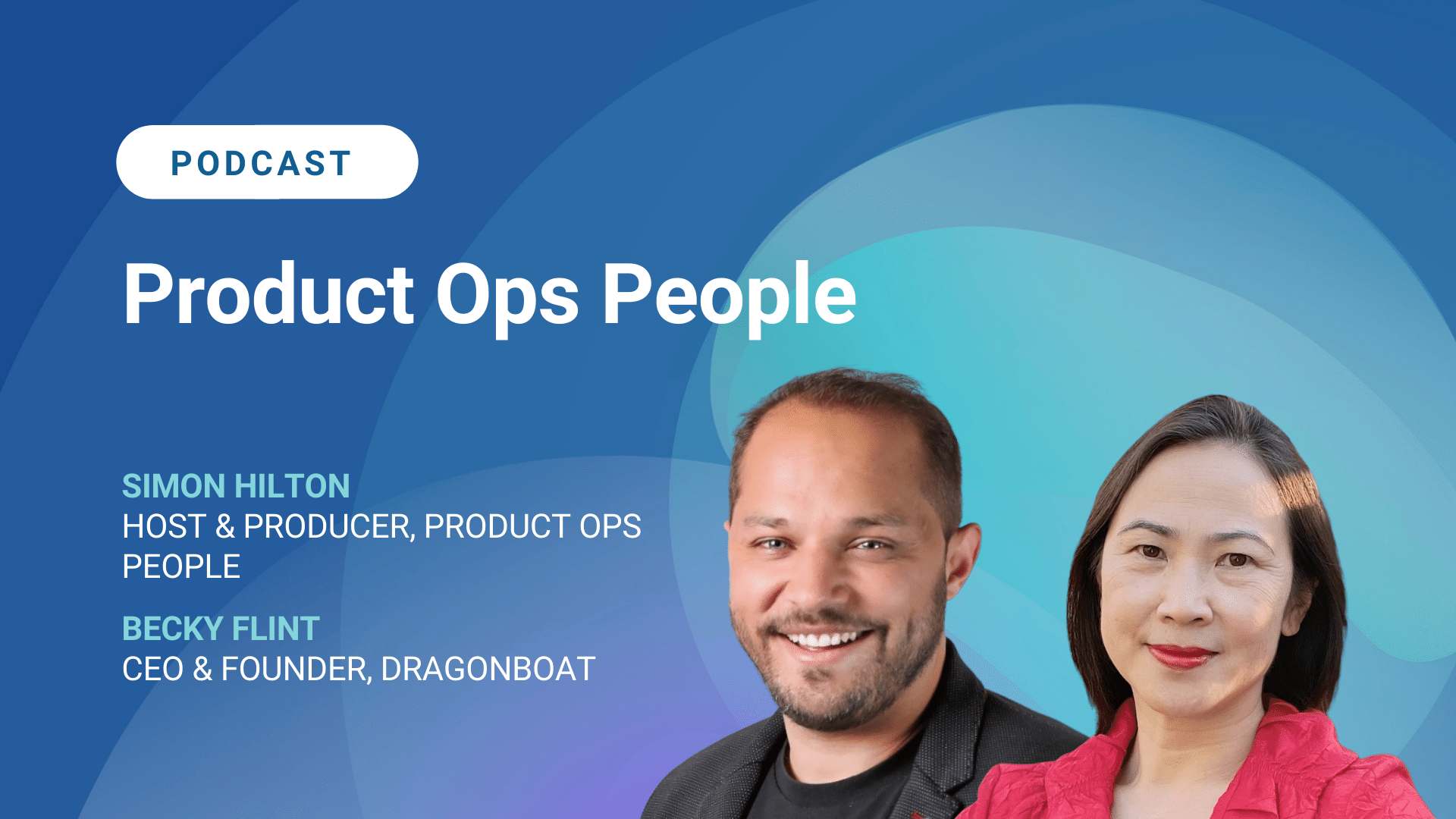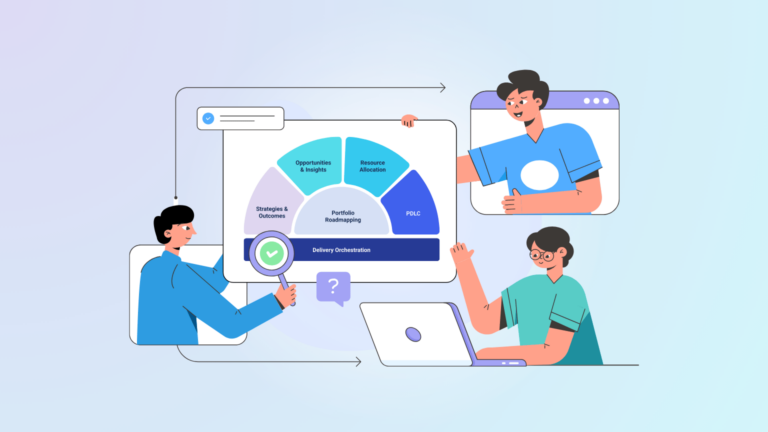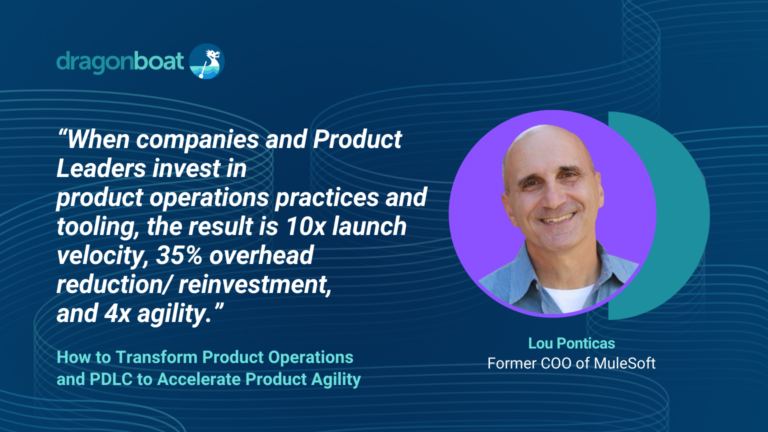Is product ops a force for good or bad when developing a product-led organization? Recently, Dragonboat CEO Becky Flint sat down with Simon Hilton of the ‘Product Ops People’ podcast to discuss this in detail. As it turns out, product ops can help not only product managers but also product leaders to make decisions at all levels of the business through a shared process, using relevant data. But it’s not always this simple.
Here are some of the key takeaways from the podcast:
- Product ops started where there were product managers – you really can’t do product without the ops bit.
- Some of the companies that put product ops on the map did so during market expansions.
- Product ops evolves as the company evolves and has three primary pillars.
- There is good and bad in every function, not just product. Check out the Good Product Ops vs Bad Product ops.
- Product ops’ mission is about enabling the product organization and product-centric company.
Listen to the Episode Here
The Evolution of Product Ops
There is a growing understanding of what product ops is, when product ops is good, and when product ops can sometimes be not helpful and create more process and waste within an organization. Becky quotes a CPO in saying, “product ops started where there were product managers – you really can’t do product without the ops bit.”
The product ops “hat” was always there; it may have been worn by a single PM in the early days and moved to a Product Director or VP of Product later on. It is just one of the many hats they have to wear to run product.
As product portfolio manager, Becky led PayPal’s global expansion in the early 2000s, and her introduction to product ops came among her first tasks, which was working with a country launch book. Launching PayPal in a new country required more than typical product management effort – not only to orchestrate multiple product teams but also to work with legal, finance, operations, new banking partners, country teams, government relations, marketing, PR, and all sorts of roles.
The companies that put product ops on the map, such as Airbnb and Uber, formed their product ops to start market expansion in different cities and countries.
The Misunderstood Product Ops Role
Most “ops” roles are generalist roles meant to fill the gaps left between specialists. Therefore it’s natural that the focus and scope evolve as the ecosystem changes. The state of the business, company, team taxonomy, product go-to-market, etc., all impact the needs of the product org. Hence, the actual focus of product ops naturally evolves as the company grows.
You can divide product operations into three pillars:
- Enabling teams
- Facilitating vertical alignment
- Orchestrating cross-team collaboration
When we talk about product management, it often has a narrow definition of software or some physical product. However, processes exist to solve a problem and are used by people – hence they are products by definition. Product ops are often the product managers of these process products used within the product teams and often across the company. Their mission isn’t to simply create processes but to accelerate revenue and thus, the organization’s collective success.
The Good and Bad In Every Function
Similar to how agile is forced in some situations where it isn’t necessary, causing many to doubt its effectiveness, the same can be said of product ops. Agile is a way of working where product ops is a role. Agile trainers could be compared to product ops.
The best way to determine the effectiveness of product operations is by measuring outcomes – and there is never one metric. A few key questions to measure are:
- Did we ship the right product? Did we actually ship it? At what cost? Where did it move business metrics? Did customers love it? There is always an opportunity cost. A good car at a $10k price tag could be a terrible car if it costs $20k.
- Did we grow our team? Have we addressed preventable mistakes? Did we cause burnout? Did we hire and ramp well?
- Have we enabled our cross-functional teams to achieve their goals and, ultimately, our company goals? Or are they are left churning trying to figure out what, when and who?
The Purpose of Product Ops
Product ops’ mission is to enable the product organization and product-centric company. They facilitate the connection between execs and teams and across groups and functions while enabling teams.
If you’ve ever heard of the story of the six blind men and an elephant, all of them thought they were right. They were not wrong, but they decided based on what they knew or were given. They didn’t have the full context.
The same thing happens with product organizations. Not everyone has the full context; that’s why it is so critical to have product ops connect teams and leaders across the functions. Product ops can enable the proper context in real-time or near real-time for the right decision-making and best result.




